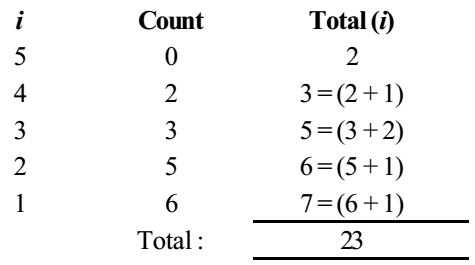-
The output of executing the following C program is _______.
#include
int total (int v) {
static int. count = 0;
while (v) {
count + = v&l;
v >>= 1;
}
return count;
}
void main() {
static int x = 0;
int. i = 5;
for (; i > 0; i --) {
x = x + total (i);
}
printf (“%d\n”, x);
}
-
- 23
- 32
- 12
- 21
Correct Option: A
Count in the function Total is static :
Check out the running code with comments
for (i = 5; i > 0; i – –)
x = x + total (5);
While (5) ( ∴ v = 5)
Count = Count + V & 1
= Count + 5 & 1 (5 & 1 = 1)
Count = Count + 1 (Count = 1)
if (V = 2) Count = 1 + 2 & 1 = 1 + 0 = 1
if (V = 1), count = (1 +(1 & 1)) = 1 + 1
Count = (1 + 1) = 2
Return (2);
Then, X = 2 + total (4):
Ccunt = (2 + (4 & 1)) = 2 + 0 = 2
(∴ 2 is static)
If (V = 2)
Count = (2 + (2 & 1)) = 2 + 0 = 2
if (v = 1)
Count = (2 + (1 & 1)) = 3
Count = 3
| return (3) |
X = ((2 + 3) + total (3);)
(∵ 2 is static)
X = (5 + total (3);)
(∵5 is static)
So, count = (3 + (3 & 1)) = 3 + 1 = 4
If (V = 2)
Count = (4 + (2 & 1)) = 4 + 0 = 4
If (V = 1)
Count = (4 + (1 & 1)) = 4 + 1 = 5
Count = 5
| return (5) |
X = (5 + 5) + total (2);
(∵5 is static)
X = (10 + total (2);)
(∵ 10 is static) so, count = 6
| return (6) ; |
X = (10 + 6) + total (1);)
(∵ 10 is static) so, count = 7
| return (7) ; |
= 16 + total (1);
(∵ 16 is static), so count = 16 + 7 = 23 (static)
(∵7 is static)
Hence in the function Total count static is: 23.

